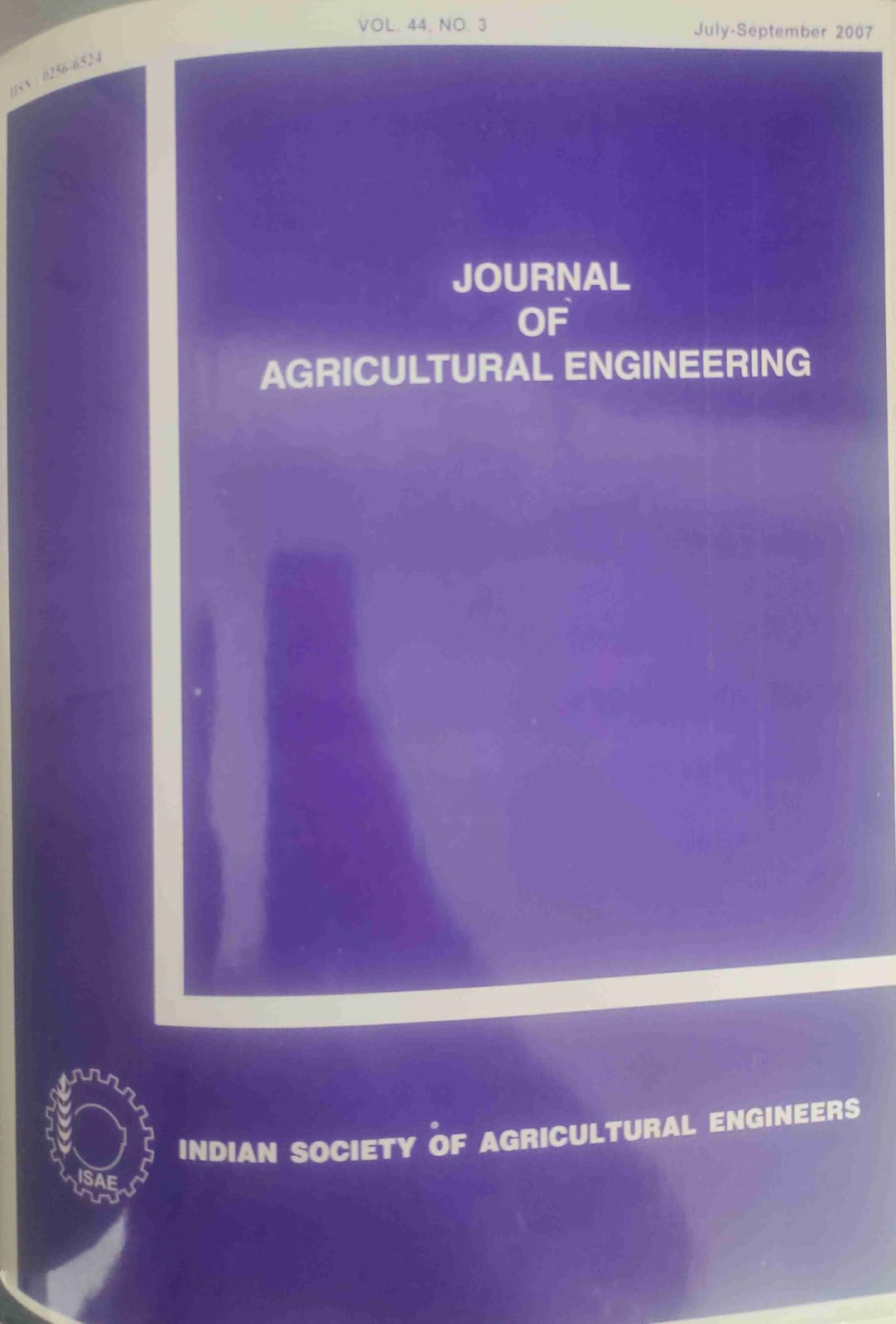Computer-Aided Development of Rotary Blades for Strip-Tillage
DOI:
https://doi.org/10.52151/jae2007443.1281Abstract
Rotary blades in strip-tillage practice are used to achieve advantages of lower draft requirement, better soil breakup and more efficient inversion and trash mixing. The study was aimed at development of three types of rotary blades for strip-tillage (namely, C-type, L-type, and RC-type) in order to reduce the energy requirement for tillage by optimizing the parameters which affect the cutting force of the rotary blades. For this reason the cutting force of the rotary blades and the equations for its surface area per unit volume of soil tilled as well as cutting angles were determined and computer programs to solve these equations were developed. Blade geometrical dimensions corresponding to the minimum and optimum blade surface area per unit volume of soil tilled and cutting angle were selected using the programs to fabricate the rotary blades. The developed and fabricated blades were evaluated in soil bin on the basis of specific work requirement. Investigations were carried out at three levels of number of blades per flange (2, 4, and 6 blades per flange), three levels of forward speed (1.4,2.5, and 3.6 km/h), and three levels of rotational velocity (110, 165, and 244 rpm). It was found that RC-type blade with less specific work requirement and more volume of soil tilled per bite had better performance than other blades. Specific work requirement increased with increase in number of blades per flange and rotary speed, while it reduced by increasing the forward speed. Specific work had an exponential relation with bite length, whereas linear relationship was observed with velocity ratio for all the blades tested.
References
Bernacki H; Haman J; Kanafojski C Z. 1972. Agricultural Machines Theory and Construction. VoU, U.S. Department of Commerce Springfield, U.S.A.
Hendrick J G; Gill W R. 1974. Rotary Tiller Design Parameters Part IV- Blade Clearance Angle. Trans. ASAE, 17(1),4-7.
Lisunov E A. 1968. Expenditure of Energy for Rotary Tilling Soil. Mech .1. Electrif. Sots. Selkhoz. 10: 36-37. In: Hendrick JG and Gill WR (1971c) Rotary Tiller Design Parameters Part 1lI- Ratio of Peripheral and Forward Velocities. Trans. ASAE, 14(4),679-683.
Lukyanov A D. 1978. The influence of the angle of cutting on cutting resistance. Translation National Tillage Machinery Laboratory, Moscow. No. NTML-WRG1044, 45-59.
Ros V; Smith R J; Marley S J; Erbach DC. 1995. Mathematical Modeling and Computer Aided Design of the Passive Tillage Tools. Trans of the ASAE, 38(3), 675-683.
Sambhi V S. 2001. Modification and development of rotary tiller blade using computer graphics. Unpublished M.Tech. thesis. Punjab Agricultural University, Ludhiana.
Sohne W; Eggenmuller E. 1959. Fast-running Rotary Cultivators and Slow-running Rotary Diggers. Investigations on individual tools. Trans. N.LA.E. No.ll, Grundi, Landtech, 11, 72-80.














